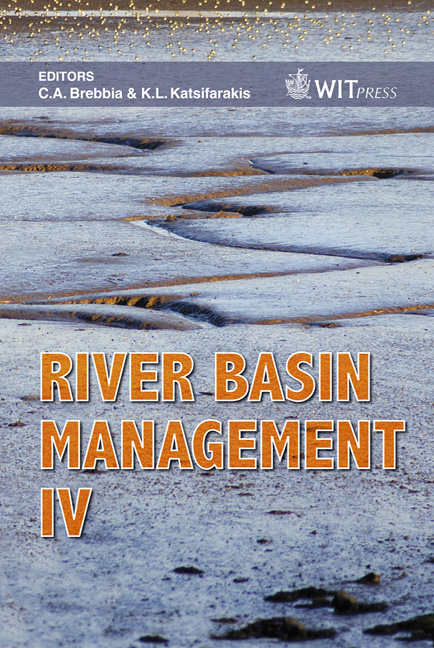Genetic Algorithm Applied To The Calibration Of A Rainfall-infiltration-runoff Model
Price
Free (open access)
Transaction
Volume
104
Pages
9
Published
2007
Size
502 kb
Paper DOI
10.2495/RM070181
Copyright
WIT Press
Author(s)
R. Chérif, J. L. Robert & R. Lagacé
Abstract
Standard optimization methods are generally moderately robust and easily diverge due to the form of the objective function. A genetic algorithm (GA) is used in this work to solve the calibration problems of a coupled model rainfall-infiltration-runoff (RIR). The model parameters are those related to Green and Ampt model infiltration in its general form (hydraulic conductivity and B). Experiments are done in the laboratory to collect rainfall runoff data, then the infiltration capacities versus infiltration heights are plotted and the scattered points are fitted to a linear regression, in order to deduce the model parameters. Experimental data are used to test the efficiency and the robustness of the genetic algorithm (GA) (using different crossovers). Moreover, the RIR model parameters values estimated by GA optimization are compared to those obtained by experimental fitting strategy. Finally, synthesized data are used to validate the optimization results. Keywords: rainfall-runoff, infiltration, hydraulic conductivity, model, optimization, genetic algorithm, crossover. 1 Introduction Global rainfall-runoff models (RR) commonly use a number of parameters. Most of these parameters are estimated by calibration strategies [1], so the model results will be dependent of its hypothesis, inputs and parameters. These parameters are generally draining coefficients of reservoirs. However, it will be more adequate to estimate some physical parameters from calibration with runoff
Keywords
rainfall-runoff, infiltration, hydraulic conductivity, model, optimization, genetic algorithm, crossover.





